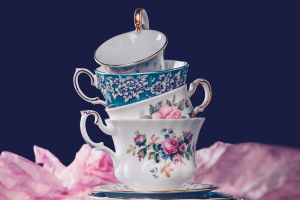Flowers bring beauty to any garden or home, but keeping them healthy and thriving requires a little know-how.
With the right care and attention, your flowers will bloom beautifully throughout the season.
1. Understand Watering Needs for Different Flowers
Watering is crucial, but it’s important to tailor your approach to each flower type. For example, succulents and cacti need minimal watering and prefer to dry out between watering, while hydrangeas need consistently moist soil. Check the soil moisture by sticking your finger about an inch deep. If it feels dry, it’s time to water. Over-watering can lead to root rot, so always ensure the pot or ground has proper drainage.
2. Sunlight Preferences Matter
While most flowers need sunlight to thrive, not all flowers require the same amount. Sun-loving flowers like sunflowers and marigolds need at least 6 hours of direct sunlight each day. Conversely, flowers such as begonias and fuchsias do better in partial shade, making them ideal for spaces that don’t receive full sunlight. Pay attention to your plants’ light preferences to prevent weak growth or poor flowering.
3. Select the Right Soil for Each Flower
Flowers need soil that supports their growth, and choosing the right soil type can make a big difference. For example, roses thrive in slightly acidic soil with good drainage, while orchids prefer a well-draining, loose potting mix with bark. If you’re growing flowers in pots, use a high-quality potting mix that’s formulated for flowering plants. For garden beds, consider adding compost or organic matter to enhance soil fertility.
4. Fertilizing for Healthy Growth
To promote vibrant blooms, flowers need a steady supply of nutrients. During the growing season, use a balanced fertilizer with equal parts nitrogen, phosphorus, and potassium to support overall health. However, during flowering, opt for a bloom-boosting fertilizer with a higher phosphorus content, which helps promote more flowers. Fertilize every 3-4 weeks to avoid nutrient imbalances and keep flowers flourishing.
5. Prune and Deadhead Regularly
Deadheading, or removing spent blooms, is essential for encouraging new flowers to grow. Plants like petunias, geraniums, and zinnias will continue to produce fresh blooms when old flowers are regularly removed. Similarly, pruning back leggy growth helps keep your plants looking tidy and encourages better air circulation, which can prevent disease and pest issues.
6. Control Pests and Prevent Disease
Flowers can be susceptible to pests and diseases, especially if they’re kept in damp or overly humid environments. Regularly check your plants for pests like aphids, spider mites, or caterpillars. Natural remedies like neem oil or insecticidal soap can help control infestations. For disease prevention, avoid overhead watering, which can promote fungal growth, and ensure your flowers have good air circulation to reduce moisture buildup.
7. Re-pot or Transplant When Needed
Flowers grown indoors or in containers often outgrow their pots. When roots begin to circle around the pot’s edge, it's time to re-pot. Choose a container that’s 1-2 inches larger than the previous one and ensure it has drainage holes to prevent water-logging. If you’re transplanting outdoor flowers, make sure to do so early in the morning or late in the evening to reduce transplant shock. Also, provide adequate space between plants to allow for healthy root expansion.
8. Temperature and Humidity Considerations
Different flowers have specific temperature and humidity needs. For instance, tropical flowers like hibiscus and gardenias thrive in warm, humid environments, while many native flowers prefer cooler temperatures and less moisture. If growing indoors, consider using a humidity tray or room humidifier for moisture-loving plants. Avoid placing flowers near heat sources or drafty windows, as sudden temperature changes can stress the plant and stunt growth.
Caring for flowers requires understanding their unique needs and providing the proper environment for them to thrive. By choosing the right soil, watering according to each plant’s needs, and providing adequate sunlight, you’ll create a foundation for beautiful blooms.
Regular maintenance like pruning, deadheading, and pest control is key to promoting long-lasting flowers. With these specific tips, your flowers will not only survive—they’ll thrive!
How to care for your flowers – Flower Care Tips
Video by Flower Addict







